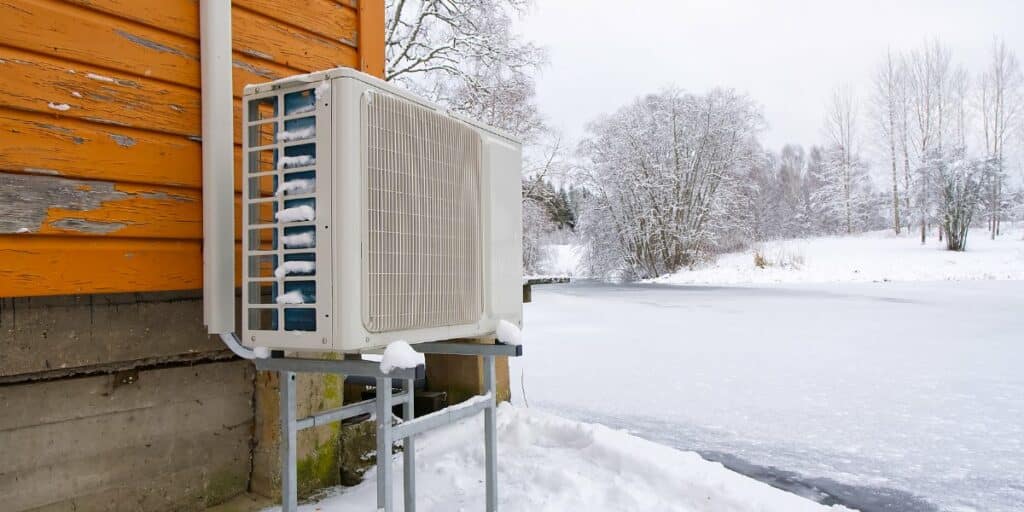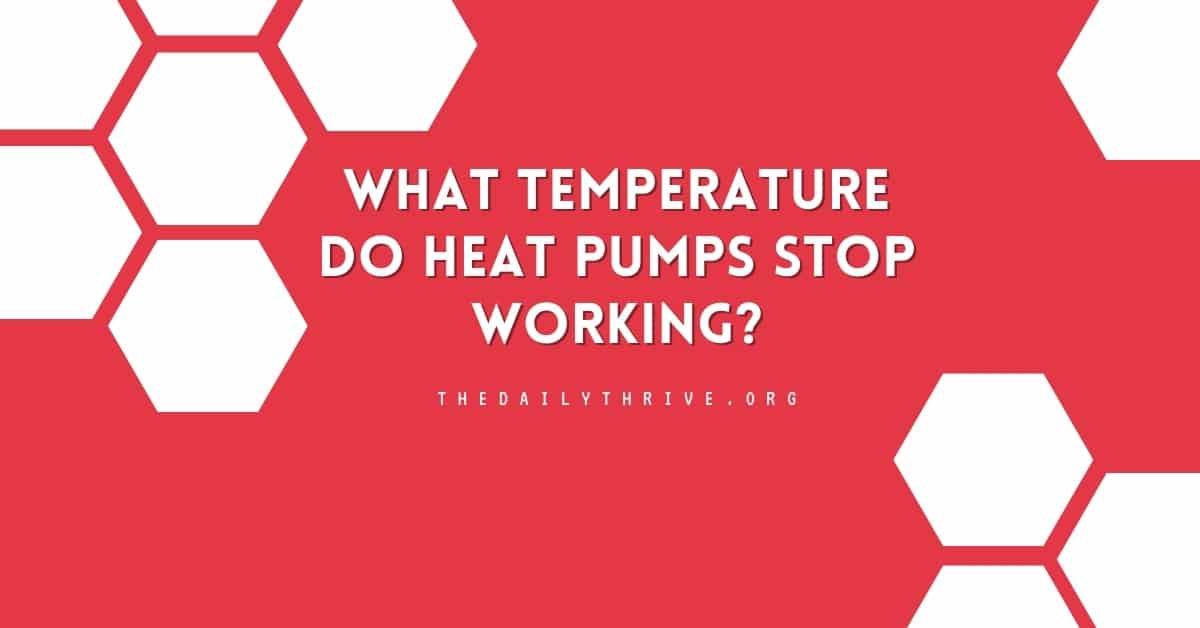Heat pumps are a versatile, energy-efficient solution for heating and cooling your home. However, they’ve historically been subject to skepticism, particularly regarding their effectiveness in cold weather. This article aims to dispel the myths surrounding heat pumps, especially their functionality in freezing temperatures, and highlight how modern advancements have significantly improved their performance.
If you’re in a hurry and just need a quick answer to the question, “At what temperature do heat pumps stop working?”: Modern heat pumps remain effective even in very cold climates, maintaining efficiency in temperatures well below freezing.
The exact temperature at which a heat pump may become less effective varies, but advancements in technology have significantly expanded their capacity to function efficiently, even in temperatures as low as below 0°F. For a more in-depth understanding and to explore how heat pumps withstand the cold, keep reading!
The Early Reputation of Heat Pumps in Cold Climates
Originally, heat pumps were less favored in areas with harsh winters. The early models from the 1980s were indeed less efficient in cold weather, often struggling to function properly as temperatures dropped. These models tended to freeze up, leading to a long-standing misconception that heat pumps are unsuitable for cold climates.

However, this view is outdated. Over the years, there have been substantial improvements in heat pump technology, making them a viable and efficient option even in very cold regions.
Modern Heat Pump Innovations
Recent advancements in heat pump technology have enhanced their efficiency and performance in standard conditions and significantly improved their functionality during extreme cold. Here’s a closer look at the modern innovations in heat pump systems and the critical role of emergency heat:
- Advanced Motors: Today’s heat pump motors are a far cry from a decade ago. They offer high efficiency and quality heating, comparable to, if not surpassing, other heating systems.
- Upgraded Compressors: Modern compressors can adjust their speed based on the temperature, speeding up in colder weather and slowing down when it’s warmer. This flexibility was absent in older models.
- Enhanced Coil Design: Modern heat pumps feature grooved copper coils, which increase the surface area for temperature exchange and enable faster and more efficient heating.
- Durable Fans: Unlike the fragile fans of the past, today’s heat pump fans are robust and capable of withstanding sharp temperature drops and demanding cycles.
Another important innovation in modern heat pumps is integrating emergency heat, also known as auxiliary heat. This feature is designed to provide supplemental heating when outside temperatures plummet to levels where the heat pump may struggle to maintain the desired indoor warmth.
When the heat pump detects that it can no longer efficiently extract enough heat from the outside air, the system automatically switches to emergency heat. This ensures that your home remains comfortable, even when outdoor temperatures are exceedingly low.
Emergency heat is typically activated automatically by the heat pump’s thermostat when it senses that the heat pump alone cannot achieve the set temperature. This feature is particularly beneficial during sudden cold spells or in regions known for their harsh winters.
These improvements have significantly boosted heat pump performance. Another question is: Are heat pumps still efficient in below-freezing temperatures?
Are heat pumps efficient in cold weather?
The performance of heat pumps in extremely cold temperatures is a common concern. However, recent studies and field tests have proven that modern air-source heat pumps can efficiently heat homes even in the harshest winter conditions.
For instance, a 2018 study by the Center for Energy and Environment tested air-source heat pumps in Minnesota, which is known for its brutal winters. The results were clear: the heat pumps effectively heated the homes throughout the winter and reduced heating energy usage by 35% to 50%.
These findings are supported by heat pump performance in regions as cold as Alaska and countries known for their frigid climates, such as Finland and Norway. Heat pumps have demonstrated their capability to function efficiently at temperatures well below freezing, debunking the myth that they’re unsuitable for cold climates.
Despite the evidence, misconceptions about heat pump performance in cold weather persist. This is largely due to outdated information and experiences with older, less efficient models. However, with modern advancements and proven efficiency in cold climates, it’s time to reconsider the role of heat pumps as a primary heating source.
Today’s heat pump technology is ready to tackle freezing winters. It offers a more energy-efficient heating solution than traditional methods. Potential programs to assist in purchasing heat pumps, along with available tax credits and rebates, make the transition to this eco-friendly option more feasible than ever.
The evolution of heat pump technology has transformed them into a formidable opponent to cold weather. By debunking the myths and understanding the capabilities of modern heat pumps, homeowners in cold climates can confidently rely on these systems for efficient and reliable heating. The advancements in heat pump technology, coupled with supportive programs and incentives, make this a prime time to consider a heat pump as a sustainable and cost-effective solution for your heating needs.






